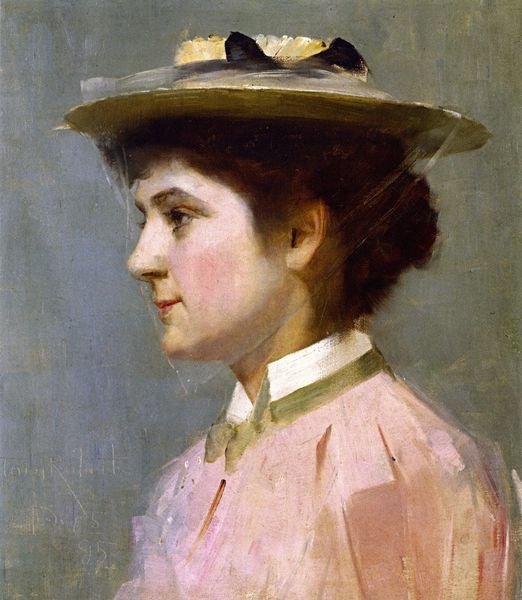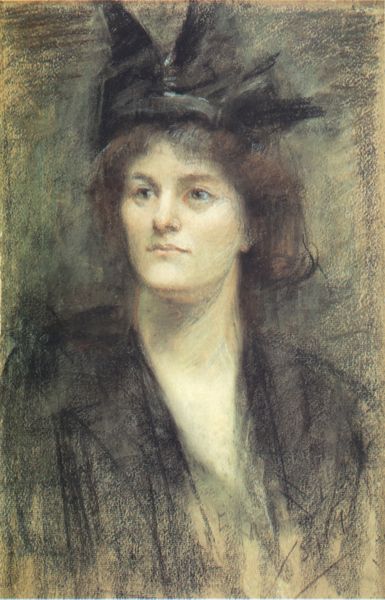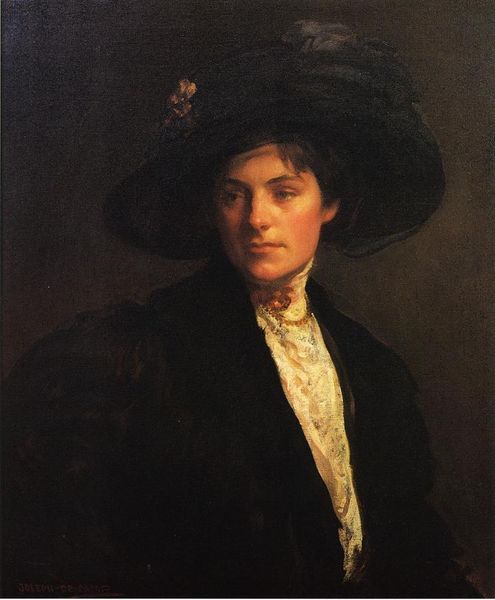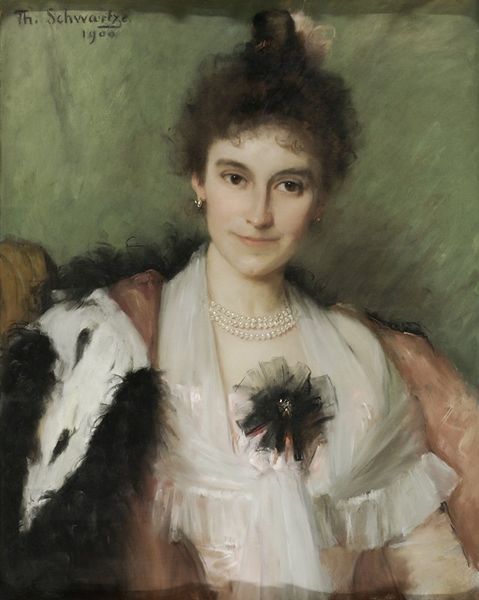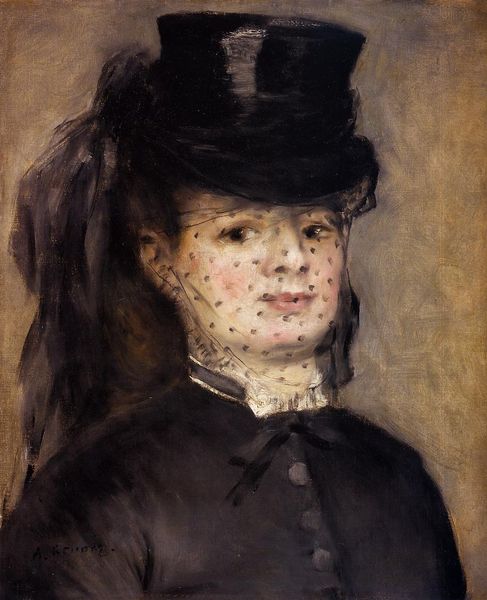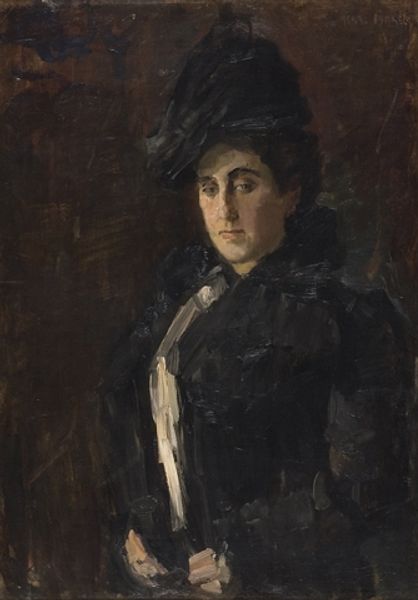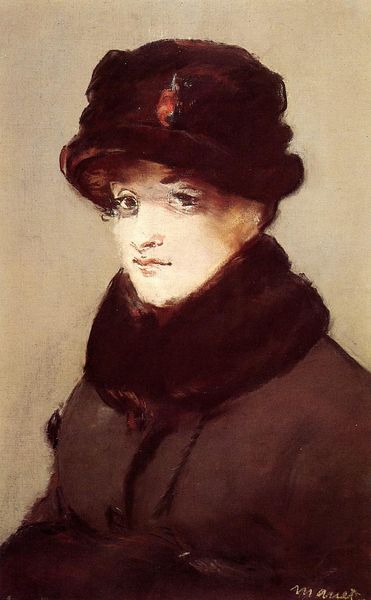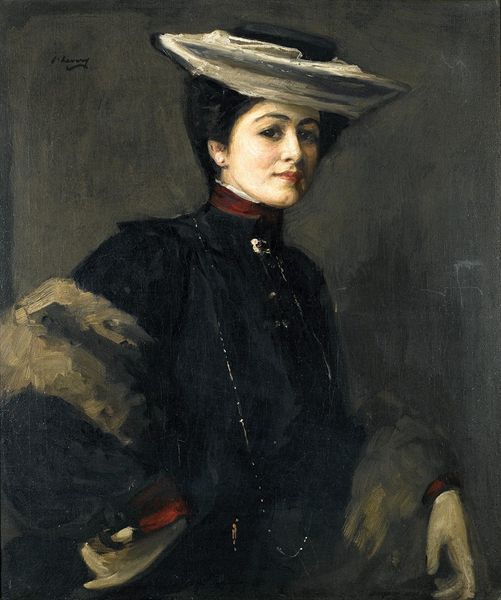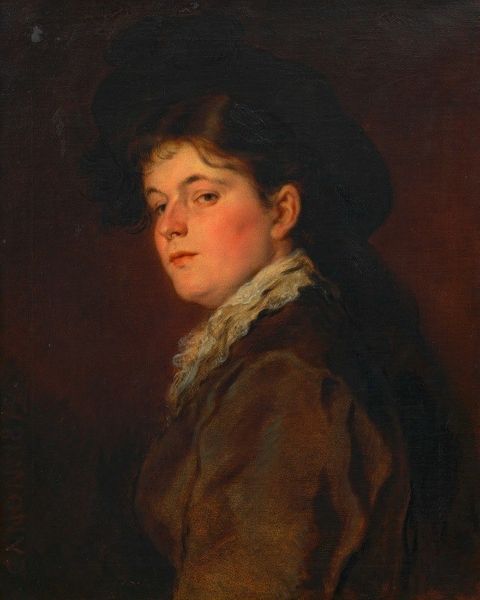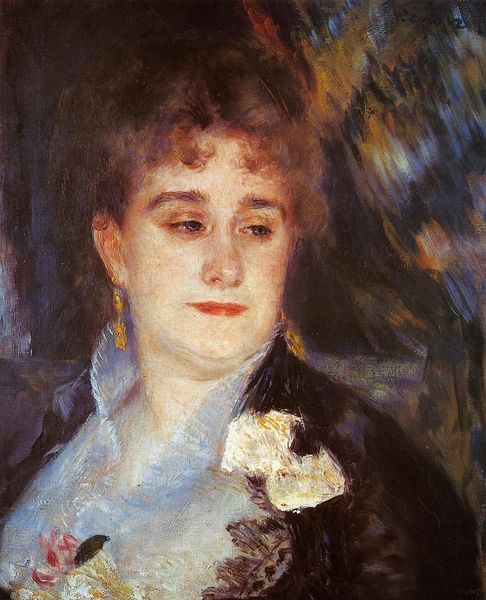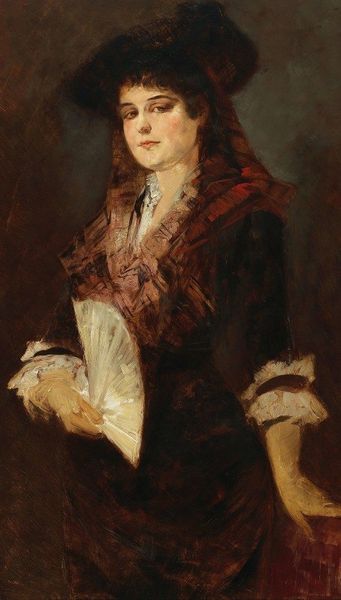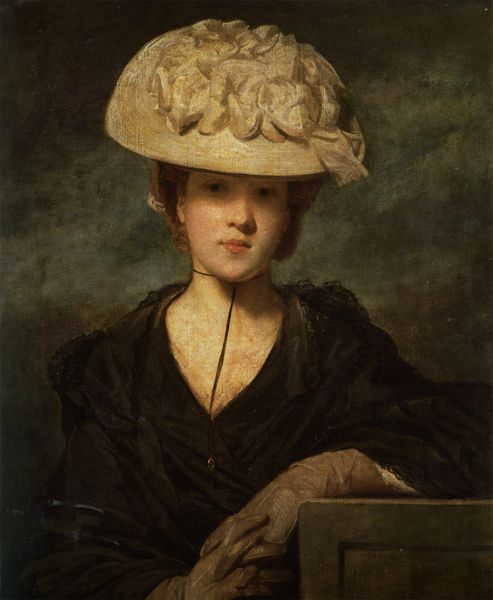
oil-paint
#
portrait
#
impressionism
#
oil-paint
#
academic-art
Copyright: Public domain
Curator: Here we have Carolus-Duran’s portrait of "Madame Ernest Feydeau," painted around 1870. Editor: I am struck by how somber this feels. There's a definite melancholic mood, with the dark dress contrasting so vividly with her pale skin. Curator: The painting exemplifies a moment where academic portraiture started integrating Impressionistic techniques. Look at the oil paint, how he used rapid brushstrokes to suggest the texture of her clothing. These artistic shifts occurred at a time when Paris was being heavily industrialized. The portrait can be seen as an engagement with contemporary aesthetic currents amidst rapid social changes. Editor: And those changes dramatically altered social customs! We see Madame Feydeau, not in an extravagant gown for a salon visit, but dressed rather simply, which might imply more intimate settings or private portrait commissions which grew during the late 19th century. Curator: Absolutely. Duran gained considerable patronage, capturing prominent individuals during that period. It also shows how these artists balanced capturing the sitter's likeness with asserting their painterly skill, therefore blurring boundaries between simple documentation and artistic interpretation. Editor: I wonder if Madame Feydeau had any particular influence over the depiction of herself? It makes me ponder about artistic collaborations between artist and patron during that historical time, especially when wealth started permeating further through the middle classes. Curator: Certainly a plausible and relevant question to consider as we grapple with notions of representation. These depictions can subtly challenge conventional views regarding femininity or the expression of emotion within set social and political norms. Editor: In a way, observing how Duran manipulated material like oil on canvas grants insight to those complex dynamics of the time. Curator: Right. Thinking through those historical moments provides much food for reflection. It certainly provides an added dimension to interpreting art.
Comments
No comments
Be the first to comment and join the conversation on the ultimate creative platform.
